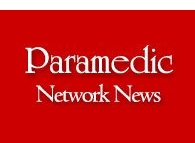Life & Limb awa Pain & Suffering. What is in our code of ethics as prehospital practitioners? When called upon, is it our duty only to preserve life and limb?
Are we mandated to alleviate pain and suffering?
How ready are we as a profession to offer pain control?
Services which have BLS crews are very limited in what they can offer for patients suffering orthopedic trauma.
Are ALS providers dispatched as back up to such calls when pain control would benefit the patient? I have more questions for the Blog this week that will ask if we are falling short of our professional mandate. Or is it that our hands are being tied?
“It’s unfortunate, but nobody ever died from pain.”
Perhaps not, but if it’s an MI causing the pain then there is a good rule of thumb. Until the pain is alleviated, the infarct is likely in progress. Time = muscle!
Another source of morbid pain can be a AAA. While this patient may not create the most compelling argument for pain control, the medic who has a higher caliber of symptom relief Rx in his toolbox should more readily recognize the necessity for rapid transport.
Again. Are we called only to preserve life & limb? Is alleviation of pain and suffering even on the map?
A dislocation can take a long time to prepare for transport without sufficient pain control. A prolonged time before relocation may result in prolonged recovery times as the musculature is further stretched. Emergency responses, for instances where pain control is desirable, may not be warranted due to the higher risk associated with running lights and sirens in urban centers. This creates a common sense argument for having a scope of practice in all ambulances which allows for pain control.
The wheels of progress turn very slowly but steps backward can happen overnight. Fentanyl and Morphine may be carried by more highly certified medics but N2O2 and Gravol are either disappearing or fidgeting in the drug kit when they could be utilized. While we do not enjoy self licensure we can expect to have very restrictive policies that see only guest attendants like RNs and RTs administer common symptom relief and analgesics with liberty and discretion.
So, I wonder if a “College of Paramedics ” provides a considerable portion of their own professional medical oversight. Medics are given a few specific toys to play with in only a specific way in a specific place in a sandbox that does not belong to them. We’ve come a considerable distance in the past quarter century. Hopefully we will see that wheel of progress continue uphill, even though slow it may be!
To offer published feedback, email blogeditor@paramedic-network-news.com

